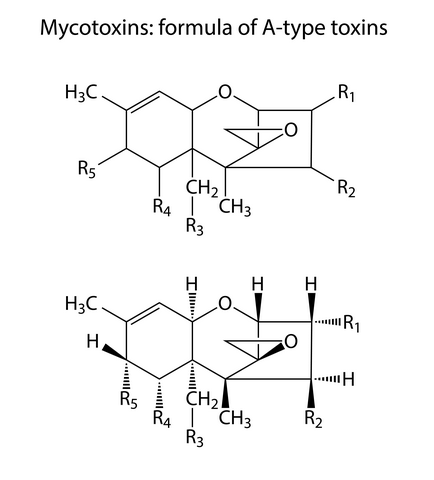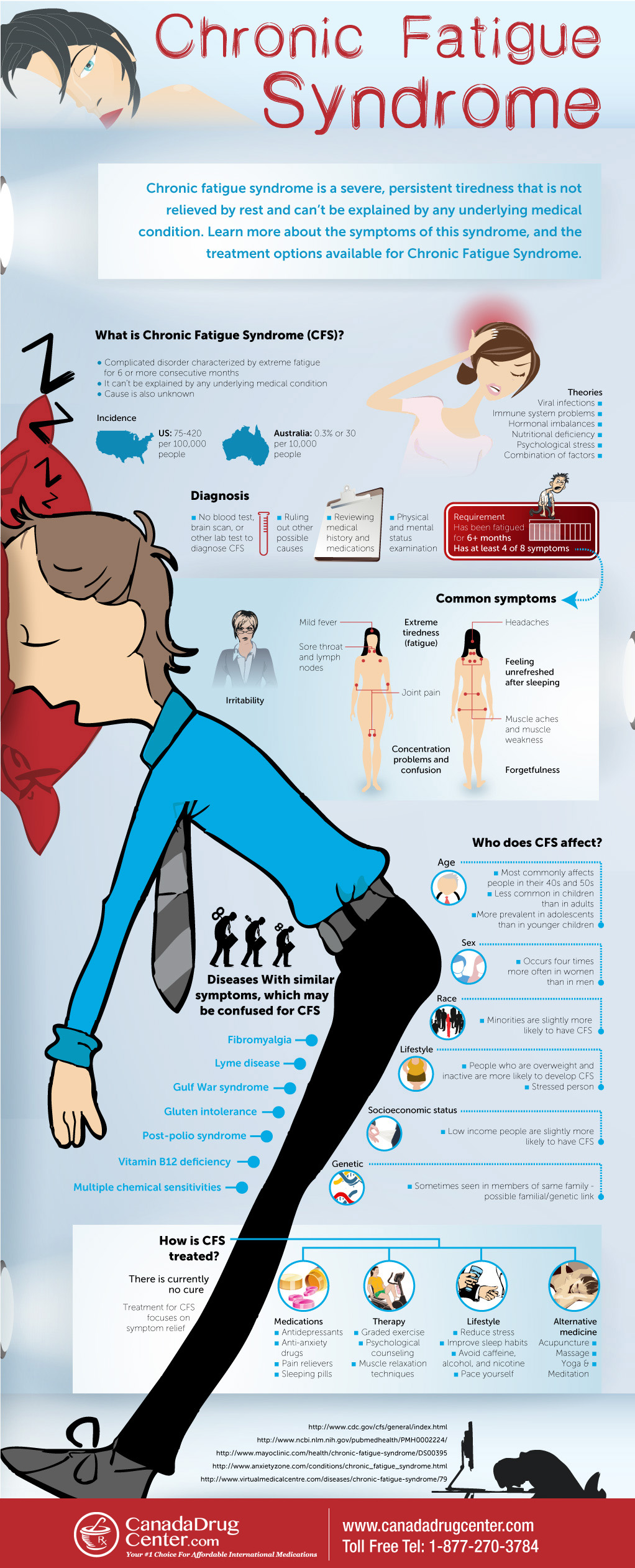What Is The Link Between Mold and Chronic Fatigue Syndrome?

What Is The Link Between Mold and Chronic Fatigue Syndrome?
“Many people are aware that water damage in buildings leads to a variety of bad outcomes. Water-impacted building materials and contents provide an environment where a variety of organisms can flourish. Bacteria, fungus, and even viruses can not only survive but reproduce on damp or wet materials. Obviously, being exposed to such organisms can potentially contribute to health problems for the occupants. Numerous national and international agencies (including the National Institute for Occupational Safety and Health, the Centers for Disease Control and Prevention, the World Health Organization, Britain’s National Health Service, and many others) have put out information warning of the possible ill health effects from occupying damp and moldy environments.” (Michael Pinto, The Mystery of Mycotoxins in Mold Contamination)
“I was a patient of Dr. Cheney’s before the “Yuppie Flu” went through and dropped a bunch of us in our tracks. Guess what my complaint was? “Chronic Fatigue.” I told Dr. Cheney, “I have an inexorably increasing reactivity to mold that gets progressively worse no matter where I live or how well I take care of myself.” This is what brought me to Dr. Cheney’s office in Carnelian Bay in early 1984. So I was reactive to mold prior to CFS. Afterwards my reactivity was absolutely life threatening. Prior to the weird flu, my problems would have been adequately described as inexplicable fatigue….eventually the sensation turned into life-destroying godawful drop-dead neurological living death illness that was nothing like fatigue. My susceptibility to mold was prior, not later as is automatically assumed. I thought that it was more than coincidental that this same mold that has such an effect on me showed up so often in clusters of CFS – especially the one that started it all, at my old high school. Interesting how Dr. Shoemaker’s “24%” HLA genotype is suggestive of the “25% ME group.” (Erik Johnson, The Role of Toxic Mold in Chronic Fatigue Syndrome)
One of the core goals of Puritan Restoration is to create awareness of mold and the potential health impact it can have.
The purpose of this article is to explore the topic of mold and health further by examining the link between mold and Chronic Fatigue Syndrome!
Top 10 Chronic Fatigue Syndrome Facts and Stats

Top 10 Chronic Fatigue Syndrome Facts and Stats
- Chronic fatigue syndrome – now very often referred to as ME/CFS (myalgic encephalomyelitis/chronic fatigue syndrome) – has been widely studied over the past 25 years
- ME/CFS is a debilitating and complex disorder characterized by profound fatigue that is not improved by bed rest and that may be worsened by physical or mental activity.
- The cause of chronic fatigue syndrome is unknown, although there are many theories, ranging from viral infections to psychological stress. Some experts believe chronic fatigue syndrome might be triggered by a combination of factors including infections (particularly by viruses), oxidative stress, immune aberrations and toxic exposures, among others.
- No single cause has been confirmed to fully explain ME/CFS.
- There is no single test to confirm a diagnosis of ME/CFS.
- ME/CFS patients remain chronically ill despite varying attempts at treatment.
- An estimated one to 2.5 million Americans are thought to suffer from chronic fatigue syndrome (ME/CFS), but the vast majority of them are undiagnosed.
- ME/CFS occurs more often in women than men and is less common among children and adolescents.
- The CDC website suggests that treatments for the disease may include drugs (antidepressants and sleeping pills), psychological counseling and graded exercise.
- Nutritional supplements such as Ubiquinol (the reduced form of CoQ10; one of the strongest lipid-soluble antioxidants known that is produced within your own body); D-ribose (a core building block of ATP); and Glutathione (one of your body’s most important antioxidants and a natural detox agent) may also help ME/CFS patients recover their energy.
Chronic Fatigue Syndrome Symptoms

Chronic Fatigue Syndrome Symptoms
According to the CDC website, there are 12 symptoms associated with ME/CFS.
- Extreme fatigue and weakness, difficulty maintaining upright posture, dizziness, balance problems, and fainting.
- Post-exertional malaise, lasting 24 hours or longer.
- Muscle and joint aches and pains.
- Sore throat, swollen glands, and periodic fevers and chills.
- Chronic headaches.
- Numbness and tingling of the extremities.
- Brain fog, cognitive dysfunction, and/or lack of concentration.
- Insomnia, and/or unrefreshing sleep, night sweats.
- Visual disturbances (blurring, light sensitivity, and eye pain).
- Gastrointestinal disturbances.
- Allergies and sensitivities to foods, odors, chemicals, and medications.
- Irritability, depression, and mood swings.
Could Mold Be The Cause of ME/CFS?

Could Mold Be The Cause of ME/CFS?
Upon review of the symptoms, it is apparent that there are many similarities with the symptoms of Chronic Inflammatory Response Syndrome (CIRS).
As discussed in a previous article, 25% of the population have a genetic susceptibility to CIRS which is characterized by 37 symptoms: fatigue and weakness; aches, pains, and muscle cramps; respiratory issues (cough, trouble breathing, and sinus problems); headaches; numbness and tingling; focus/concentration issues, confusion, and mood swings; sleeping troubles caused by night sweats; visual problems, including sensitivity to light and blurring vision; diarrhea and other gastrointestinal problems; and allergic reactions.
Could this possibly mean that individuals diagnosed with ME/CFS are actually suffering from CIRS because they have a genetic predisposition to mold illness?
If this is the case, then one of the key causes of ME/CFS could be mold.
Research backs this hypothesis!
In 2009, the World Health Organization (WHO) published, WHO Guidelines for Indoor Air Quality: Dampness and Mould, to highlight the potential health problems caused by Water Damaged Buildings (WDB). The WHO concluded:
“When sufficient moisture is available, hundreds of species of bacteria and fungi – particularly mould – pollute indoor air. The most important effects of exposure to these pollutants are the increased prevalence of respiratory symptoms, allergies, and asthma, as well as disturbance of the immune system. Preventing (or minimizing) persistent dampness and microbial growth on interior surfaces and building structures is the most important means of avoiding harmful effects on health.”
In layman’s terms, in this 228 page document, the WHO clearly argues that WDB pose a health threat to occupants.
The 9 most common causes of mold growth in WDB’s are the following:
- Leaking roof causing moisture in the attic.
- Improper ventilation in the attic trapping moisture in the eves and insulation.
- Poor ventilation in the bathroom trapping moisture allowing mold to grow on the walls.
- Leaking seals around windows allowing storm water to be trapped inside the walls.
- Leaking plumbing in bathrooms. Sometimes the leaks are so slow that the only indication of a problem is when mold shows up!
- Leaking water supply lines to washing machines.
- Leaking dishwasher supply lines or drain lines in the kitchen. Leaking ice maker supply lines.
- Poor grading from landscaping allowing water to drain toward and into the home instead of away from the home.
- One of the most common causes of mold growth happens when a burst pipe causes water damage in the home and it’s not dried quickly enough.
One of the key problems for individuals working or living in a WDB is that they will be exposed to mycotoxins. Mycotoxins, also known as secondary metabolites are chemical compounds that are produced by fungi during their growth cycle. The suffix toxin is used because a great number of these mold-produced chemicals have been proven to be poisonous to both insects and animals—including people.
In 2013, researchers, Joseph H. Brewer, Jack D. Thrasher, David C. Straus, Roberta A. Madison, and Dennis Hooper explored the connection between mycotoxins and CFS, to determine if mold could possibly be the cause. Their study concluded:
Over the past 20 years, exposure to mycotoxin producing mold has been recognized as a significant health risk. Scientific literature has demonstrated mycotoxins as possible causes of human disease in water-damaged buildings (WDB). This study was conducted to determine if selected mycotoxins could be identified in human urine from patients suffering from chronic fatigue syndrome (CFS). Patients with a prior diagnosis of CFS were evaluated for mold exposure and the presence of mycotoxins in their urine. Urine was tested for aflatoxins (AT), ochratoxin A (OTA) and macrocyclic trichothecenes (MT) using Enzyme Linked Immunosorbent Assays (ELISA). Urine specimens from 104 of 112 patients (93%) were positive for at least one mycotoxin (one in the equivocal range). Almost 30% of the cases had more than one mycotoxin present. OTA was the most prevalent mycotoxin detected (83%) with MT as the next most common (44%). Exposure histories indicated current and/or past exposure to WDB in over 90% of cases.
Key conclusions from the study:
- 93% of the ME/CFS patients tested had mycotoxins in their bodies. If you have been diagnosed with ME/CFS, you may want to have your urine checked for the presence of mycotoxins
- 90% of the ME/CFS patients tested, were exposed to or are currently living in a Water Damaged Building. If you have been diagnosed with ME/CFS and your test proves positive for mycotoxins, then you likely have lived or are living in a WDB.
Concluding Thoughts On The Link Between Chronic Fatigue Syndrome and Mold

Concluding Thoughts On The Link Between Chronic Fatigue Syndrome and Mold
Since the modes of activity of trichothecenes differ from aflatoxins and other mycotoxins, the combinations of mycotoxins could be additive or even synergistic, which could significantly reduce the amount of either mycotoxin required to induce an immunosuppressive or toxic effect. Immunosuppressive and combinational effects of multiple mycotoxins may constitute major components in the adverse health effects reported by many of the victims of mold exposure. (A risk assessment model for mycotoxin-producing molds on human health in indoor environments)
Considering the similarity of symptoms between those suffering from ME/CFS and those suffering from CIRS, it is likely that many individuals diagnosed with ME/CFS may have been exposed to mycotoxins produced by mold growth.
If you have been diagnosed with ME/CFS, one of the first proactive actions you can take is to find out if you have mycotoxins in your body. If you do, then your current exposure to mold in a WDB or previous history of living in a WDB could be the cause.
If you are unsure of whether or not your home is water damaged and has mold, contact Puritan Restoration and we can determine if you have mold and the cause of your mold growth.
If you do have mold and you test positive for mycotoxins in your body, there are two key actions you must take.
First, you should consult with an environmental physician that knows how to treat individuals sick from mold and mycotoxin exposure.
Second, if you are currently living in a WDB property, the source of the mycotoxin exposure has to be removed. This is very important because professional mold remediation is essential to preventing the symptoms of mold sickness and Chronic Fatigue Syndrome from coming back when your medical treatment has been completed.
Got Mold Questions?
If you have recently been diagnosed with ME/CFS and suspect that mold may be the cause, please call us, 617-527-2229 or send us an e-mail. We empathize with your situation because we have been removing mold from property for 40 years. Puritan Restoration has removed mold from 1000s of homes. For peace of mind, give us a call!

Got Mold Questions?


Recent Comments